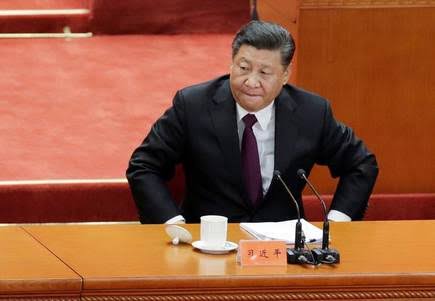China Is Increasingly Losing Most Of Its Big Projects Of BRI

China wants to develop these projects to gain access to certain countries and use them as military bases or as a benchmark of Chinese expertise
In May, Australia cancelled the Belt and Road (BRI) agreement with China citing inconsistencies with its foreign policy, saying that it was contrary to its foreign relations.
While that may have been due to the increasingly hostile relations between the two countries, many big-ticket projects that China was keen to develop in other countries have been cancelled because of the debt burden or because they grossly undermined the ecological balance and environmental concerns. China wanted to develop these projects so as to use them as leverage to gain access to these countries and use them as military bases in the future or to show them off as a benchmark of Chinese expertise.
Two such projects were in India’s neighbourhood.
Bangladesh cancelled the Sonadia deep-sea BRI project in October 2020 which China was keen to develop even if the port was supposed to hurt biodiversity on a large scale. The project was to be funded and financed by Chinese loans and was supposed to see an investment of $14 billion and it could have pushed Bangladesh into deep Chinese loans.
Also, its location was geographically very close to India and so it would be a security threat if developed with the possibility that China could use it as a military base in the future.
Instead, Bangladesh signed an agreement with Japan to develop a deep seaport in Matarbari, just 25 km from Sonadia that is in line with environmental concerns. To be ready by 2025, the project will be part of a public-private partnership with Japan.
Then China was forced to withdraw from funding three railway projects in Bangladesh this year. Handled by Chinese contractors, as China demands in the infrastructure projects it supports financially, the projects saw cost overruns and embezzlement of funds. After these manipulations came to light, the prime minister’s office of Bangladesh conducted a probe.
Myanmar in Southeast Asia has also cancelled another project China was eyeing for the Myitsone dam project. The $3.6 billion dam project was financed by China. Built on the Irrawaddy River, the project was doomed from the beginning.
After being in making for years, the project was suspended in September 2011 amid democratic reforms as the Burmese Junta government had taken a unilateral decision to allow the controversial project that was expected to bring cultural, environmental and sociological disaster for Myanmar and its people. The ethnic Burman majority of Myanmar is against any dam on the Irrawaddy River as it traces its roots of civilization there.
The project was shelved while attributing the reason as being that the electricity it would produce, 90 per cent of it, would be sold to China while 10 per cent was to be given free to Myanmar. Being a power-starved country, protests were held against it in Myanmar. Under pressure, China later said Myanmar was the primary market and the rest was to be exported. This is when Myanmar is among the countries with low electrification rates. A World Bank report says around 32 per cent of the country’s population has no electricity connection.
The Myitsone dam project is still suspended though it’s been 10 years now. Myanmar is economically dependent on China. China has used the clout to force the government there not to scrap the project but find a way to finally allow it and with the return of pro-China military government there, the possibility looks real now.
China has constructed over 300 dams in more than 70 countries, considers itself a master in hydropower technology and if Myitsone dam is cancelled due to public protests, it would not only hurt the Chinese ego but would also be a big worry for China’s future investments in hydropower sector globally with growing protests against building dams on mainstream rivers.




